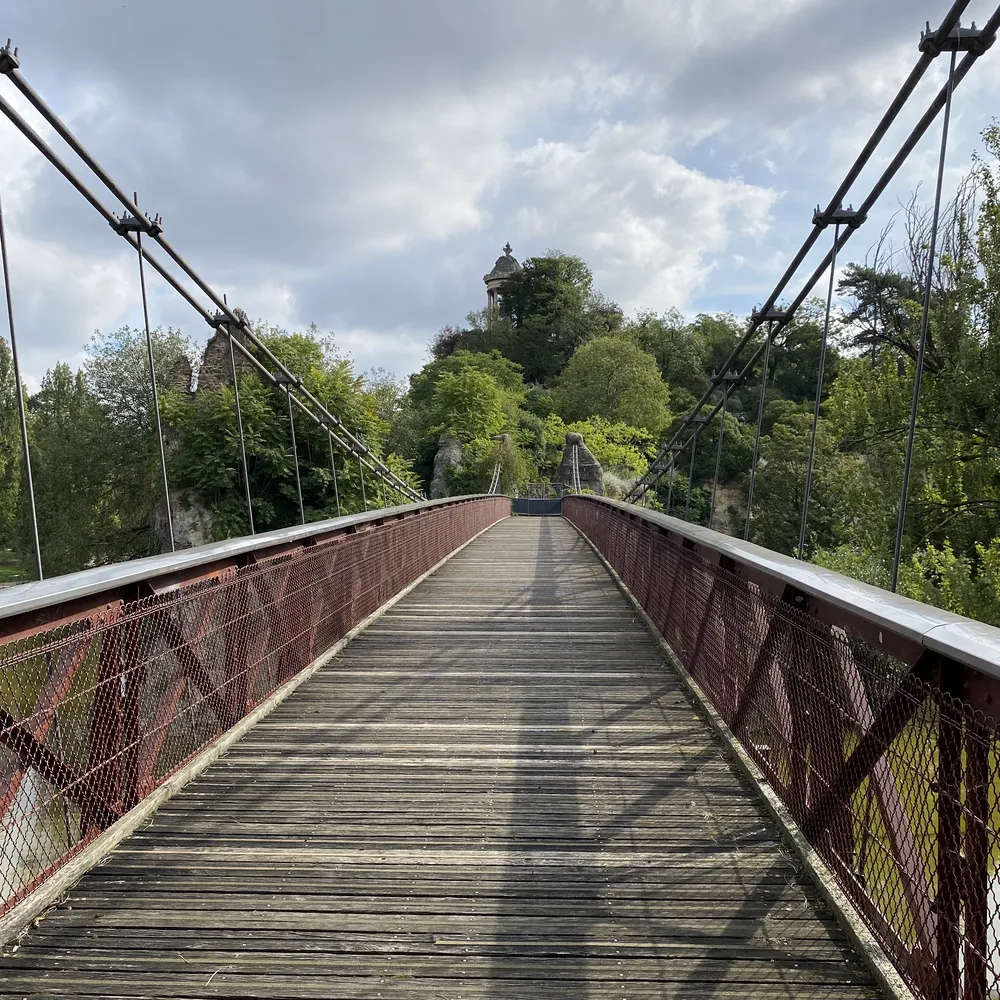Buttes-Chaumont: Parisian Park with a Mountain Spirit and History
The Buttes-Chaumont Park, with its dramatic views and hidden corners, is one of the largest and most distinctive parks in Paris.
Located in the southern part of Paris’s 19th arrondissement, Buttes-Chaumont offers not only a natural escape from the urban bustle but also a fascinating story of transformation. Once one of the most desolate places in Paris, it has become a stunning green oasis. Spanning nearly 25 hectares, this park is the fifth-largest in Paris, combining natural landscapes with architectural elements to create a unique experience for every visitor.
From Gallows to a Green Oasis with a Mountain Spirit
The current Buttes-Chaumont has a rich history: in the Middle Ages, it was the infamous site of the Montfaucon gallows, where royal executions were carried out. Later, it became a city dump and was also full of gypsum quarries. In 1867, during the reign of Napoleon III, the area was transformed through the urban plans of Baron Haussmann and the talent of engineer Adolphe Alphand, who drew inspiration from English parks. The goal was to create the illusion of a mountainous landscape, where massive rocks, dramatic slopes, and waterfalls alternate with serene lakes and trees.
Iconic Features of the Park Inspired by Mountains
The most prominent feature of the park is the Temple of Sybil, situated atop a 30-meter hill on Île du Belvédère in the middle of the lake. This neoclassical temple, designed by architect Gabriel Davioud, was inspired by the ancient Temple of Vesta in Tivoli. The temple offers a unique view of Paris and is easily accessible via a suspension footbridge designed by Gustave Eiffel himself. This bridge, spanning 65 meters, connects the lake shore to the island, creating romantic scenery unique to Buttes-Chaumont.
Other highlights include three restaurants with scenic views. Pavilion Puebla on the slopes of Puebla Hill, Rosa Bonheur located on the site of the former Pavilion du Chemin de Fer, and Ora Farmhouse-Pavillon du Lac, which offer not only refreshments but also exceptional views of the park and the city. In the southern part of the lake, there is also an artificial grotto, originally the entrance to an underground quarry, which is 20 meters high and decorated with faux concrete stalactites. These details, along with the high hills and descending valleys, give the park the atmosphere of an alpine landscape.
The Petite Ceinture Railway
The eastern part of the park is traversed by the former Petite Ceinture railway, which once connected different parts of Paris. This railway, whose southern section runs through a tunnel and the northern section through an open trench, serves as a reminder of the city’s industrial history and adds to the park’s unusual atmosphere, where historical and natural elements blend.
How to Get to Buttes-Chaumont
Buttes-Chaumont Park is easily accessible by public transportation. The nearest metro stations are Buttes-Chaumont and Botzaris on line 7 bis, which lead directly to the park’s southern entrance. The park offers several entrances, each marked by a distinctive industrial-style pavilion made of brick and ceramic motifs designed by Gabriel Davioud. Additionally, there are numerous paths and trails allowing visitors to freely explore the hidden corners of this romantic park.
A Green Gem of Paris with a Mountain Spirit
Today, Buttes-Chaumont is a popular destination for both Parisians and tourists who wish to experience Paris from a different perspective. The combination of romantic views, architectural gems, historical memories, and natural features makes this park a unique place where history and nature harmoniously converge.











